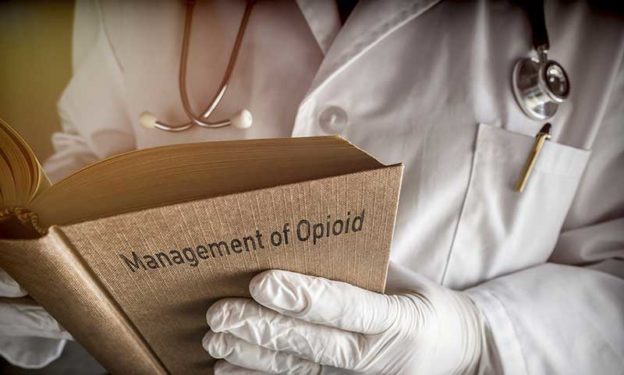$25.4 billion—that’s how much the global opioid market was worth in 2018. Additional market research projects that opioids will see a compound annual growth rate (CAGR) of 1.8 percent between 2019 and 2026—a close match to the projected 2% CAGR of the world’s most popular class of drugs, statins.
The reason for incredible value and growth in opioid drug use is because of a rise in chronic pain due to conditions such as fibromyalgia, cancer, and arthritis. Unfortunately, the increase in opioids is also associated with a dramatic increase in opioid dependency, abuse, overdose, and death—as many as 130 deaths per day in the United States alone.
As doctors, scientists, and the public alike all try to make sense of the severe drug epidemic, it’s helpful to clarify some relevant terms people may encounter in their research. This includes two words many people don’t realize are distinct from each other:
Opiates and opioids.
For over 25 years, people from all over the world have chosen Waismann Method as their opioid detox provider.
We know the challenges you face and the importance of creating a unique and personal experience for you right from the start.Call for Detox Options 1-800-423-2482
Opiates vs. Opioids: What is the Difference?
“Opioid” is a broad term to describe three types of opioid drugs: opiates, synthetic opioids, and semi-synthetic opioids. All three types of drugs act on opioid receptors within the body to mediate and influence pain, reward, and addictive behavior. (Notably, the human body also creates its own opioids—called endogenous opioids—which interact with opioid receptors. To illustrate, these include endorphins, dynorphins, and enkephalins.)
How are these three types of opioid drugs different?
- Opiates: these are pain-relieving chemicals found naturally in the opium (poppy) plant, Papaver somniferum. For thousands of years people have cultivated poppy plants. These plants contain at least 20 different opiates, also known as opium alkaloids—although we only use four medicinally.
- Synthetic Opioids: pain-relieving chemicals created in a laboratory. These human-made drugs mimic opiates and activate the same receptors in the human body. However, they do not come from the poppy plant.
- Semi-Synthetic Opioids: pain-relieving chemicals created in a laboratory but derived from naturally-occurring opiates.
Another way to say it is that all opiates are opioids, but not all opioids are opiates. Lately, the term “opiate” is becoming less common, and many in the medical community are simply using “opioids” to describe all three types of drugs, whether natural or human-made.
This simplification makes some sense. Remember: all three types of drugs interact with and bind to opioid receptors in the body. Therefore, all three can relieve moderate to chronic pain. Both opiates and opioids also can lead to emotional and physical numbing, decreased respiratory and heart rate, constipation, feelings of euphoria.
Perhaps the most important fact to realize is that all types of opioids—whether they come from a poppy plant or a lab—are dangerously addictive and have a high risk for misuse, dependency, and fatal overdose.
This, in fact, maybe the most important point to remember:
It’s not wise nor realistic to assume a “naturally” occurring opiate is in any way safer than a synthetic or semi-synthetic opioid. All three kinds of opioids can be hazardous and patients should only use them according to the physicians directions.
Common Types of Opiates and Opioids
What exactly do these different opioid drugs look like—prescription or otherwise? The following list includes the most common types of opiates, semi-synthetic opioids, and synthetic opioids used both legally and illegally:
Opiates
- Morphine: this is the most abundant type of opiate found in the opium poppy. Common brand names include Kadian and MSContin.
- Codeine: while not as highly concentrated in opium poppy as morphine, codeine is still a widely used natural chemical for pain relief and the creation of semi-synthetic opioids. Codeine is a common ingredient in cough suppressing medications.
- Thebaine: this opiate is the most toxic because it’s modified from the natural state. Also, thebaine is an ingredient in semi-synthetic opioids like oxycodone and hydrocodone.
- Papaverine: this type of opiate is usually used as a vasodilator, meaning it helps relaxes and opens blood vessels. This improves blood flow in people with circulation problems and high blood pressure.
Opioids (Semi-Synthetic)
- Heroin: this illicit drug is very similar to morphine and is actually derived from morphine and acetic anhydride. Other names for heroin are diamorphine or diacetylmorphine.
- Oxycodone is known by its more common brand names OxyContin and Percocet.
- Hydrocodone: best recognized by familiar brand names like Vicodin and Lortab.
- Hydromorphone: known by the brand name Dilaudid.
- Oxymorphone: known by the brand name Opana ER.
Opioids (Synthetic)
- Methadone: prescribed by many doctors to help people with opioid use disorder and heroin addiction; methadone brand names include Dolophine and Methadose.
- Fentanyl: a potent analgesic drug that can be sold under the brand name Duragesic.
- Meperidine: better known by its brand name Demerol.
- : Ultram and Ultracet are common brand names for tramadol.
Conclusion
Opioids is the category which includes different types of the same powerful drug. For example, naturally occurring opiates, synthetic opioids, and semi-synthetic opioids. All of which are incredibly addictive, dangerous, and habit-forming. Ultimately, these factors drive the epidemic of opioid use disorder and overdose deaths.
If you or a loved one struggles with addiction and needs help with opioid use disorder treatment, we invite you to contact our staff at Waismann Treatment. Moreover, our experienced team of doctors and healthcare providers focuses on the individuals who trust us with their care—not on just the disorder they’re living with.
By understanding each patient’s unique needs, beliefs, goals, health history, and values, we’re able to craft an effective, efficient, and empathetic treatment plan that can help them find relief from the grips of addiction and dependency. Contact us today to find out how we can help you or your loved one’s journey toward recovery and wellness.
Sources
https://medlineplus.gov/druginfo/meds/a682707.html
https://www.drugabuse.gov/drugs-abuse/opioids/opioid-overdose-crisis
https://www.centeronaddiction.org/the-buzz-blog/we-asked-you-answered-there-difference-between-opioid-and-opiate
https://www.researchandmarkets.com/research/p7wsvs/global_statin?w=12
https://www.grandviewresearch.com/industry-analysis/opioids-market






